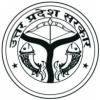Introduction
The Office of the Commissioner, Moradabad Division, Moradabad was established in the year 1980 by the Government of Uttar Pradesh. First of all Shri Ramchandra Takru, IAS, was posted by the government as the first Divisional Commissioner on 14.09.1980 in Moradabad Division, Moradabad. At the time of establishment, Moradabad division had three districts Moradabad, Bijnor and Rampur. As per the instructions of the government, some parts of Meerut division were added to Bijnor district. Amroha and Sambhal districts were carved out of Moradabad district by the government. Thus, at present there are 05 districts in Moradabad division. District Amroha was established on April 15, 1997 and Sambhal district was established on September 28, 2011. Presently Mr. Aunjaneya Kumar Singh, I.A.S., is posted as 44th Divisional Commissioner in Moradabad Division, Moradabad from 06.03.2021. As per the instructions given by the government, under the chairmanship of the present Divisional Commissioner, the work is being done smoothly by all the districts of the division.
The Divisional Commissioner’s Office is the most important part of the Revenue Administration. Under this comes the District Magistrate and all the revenue authorities under him. There are Additional Divisional Commissioners to assist the Divisional Commissioner. In accordance with the instructions given by the Government and the Revenue Council, the works are completed by the Divisional Commissioner and the Additional District Magistrate, Deputy District Magistrate, Tehsildar, Naib Tehsildar, Revenue Inspector and Lekhpal under them. Administrative work and judicial disputes are settled in the Divisional Commissioner’s office.
For the implementation of the instructions of the government, the Divisional Commissioner consults with his associate Additional Divisional Commissioner and through the Additional Divisional Commissioner, Chief Administrative Officer, Senior Administrative Officer and Administrative Officer, gets those instructions implemented through desk assistants. Development works, board meeting of the authority, law and order, tax-non-tax, municipal corporation, local bodies are reviewed under the chairmanship of the divisional commissioner in the office auditorium at the divisional level. Winter and monsoon surprise inspections of districts, bodies and police stations are also done by the Divisional Commissioner and Additional Divisional Commissioner.
The work of disposal of pending references of Honorable Chief Minister and Chief Secretary, disposal of received references of public representatives is done by the Divisional Commissioner. The work of the Divisional Commissioner’s office under the Revenue Department is performed by various acts and rules. Against the orders passed in the court of District Magistrate/Additional District Magistrate, Sub-Divisional Magistrate and Additional Officer, Tehsildar/Naib Tehsildar can be filed in the court of Divisional Commissioner and Additional Divisional Commissioner. The appeals and inspections filed by the Divisional Commissioner and Additional Divisional Commissioner are decided on the basis of merits and demerits from the legal/judicial point of view. The courts of the Divisional Commissioner and Additional Divisional Commissioner come under the definition of the Chief Controlling Revenue Authority. In which court the appeal or monitoring will be done against the stamp collector, it is determined on the basis of the amount involved in the case in the court of the stamp collector. The District Magistrate/Additional District Magistrate has the right to hear the original suit under the Arms Act and various other Acts. The Divisional Commissioner has the right to hear the appeal filed against such orders. Sub-Divisional Officers, Additional District Magistrates and District Magistrates also have the right to hear the cases under some other Acts. In most of the cases against the orders passed by these courts, the District Judge or the Divisional Commissioner has been empowered to hear the appeal or monitoring.


